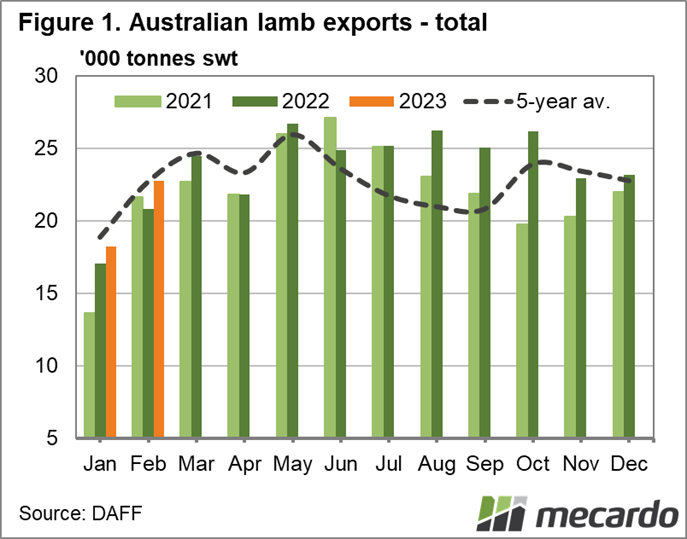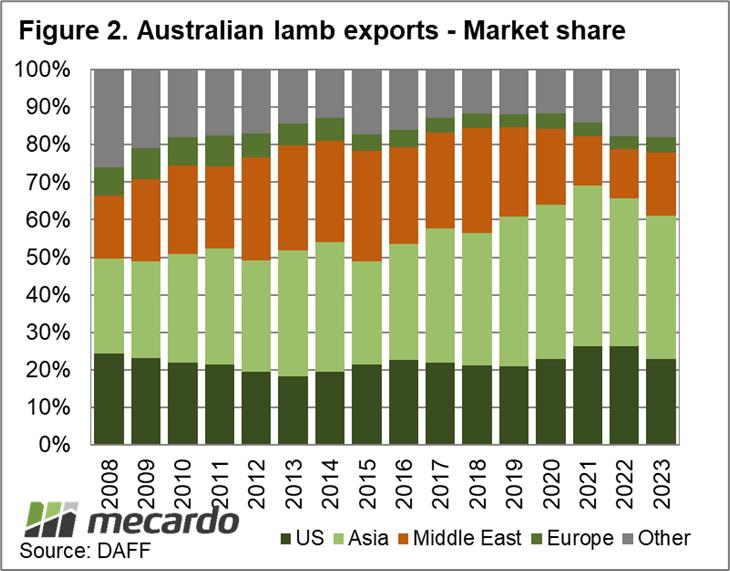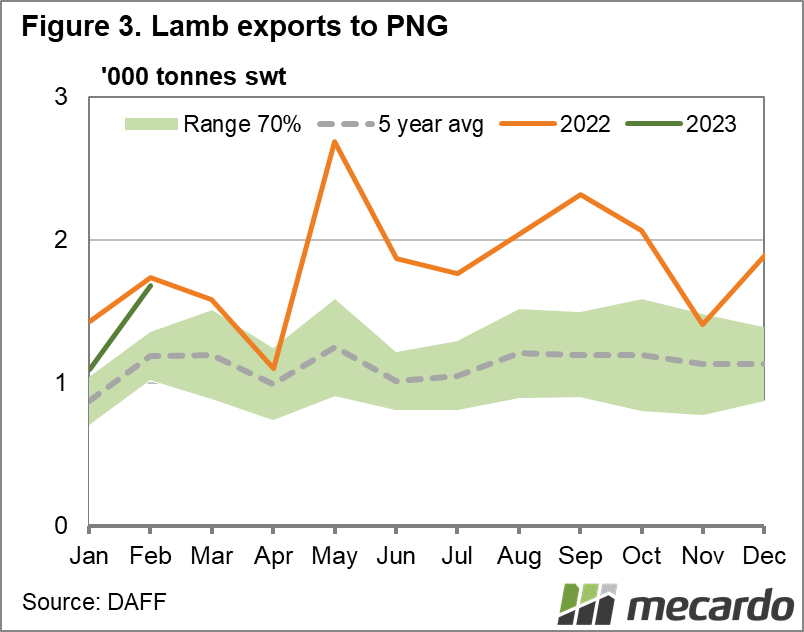Australian lamb exports recovered from supply, logistics and covid-19 created hurdles from the previous two years in 2022, finishing the year just a fraction above the record volume set in 2019. The scene is set for 2023 to follow suit, with Meat and Livestock Australia projecting lamb exports to rise more than 8% year-on-year, before levelling out at a slightly lower volume for the following two years. Data is in for January and February, and while both months achieved a year-on-year rise in lamb export volumes, both were below the highs seen for those months in 2019.
Total lamb exports for February were just above the five-year average at 22,769 tonnes, with shipments to the US, the Middle East and Asia all stronger year-on-year. The US, which took a record 26.4% of Australian lamb exports in 2022 has had a slower start to the year, making up just 23% of the market share and taking below-average volumes for both January and February – although the February lamb exports to America were up year-on-year. Exports to the Middle East are also below average for 2023 so far, however, the first two months of the year were higher than both 2022 and 2021 levels, and its market share has increased to 16.6%, up from 13% for 2022.
There’s been plenty of talk about the opportunities in China as it relaxes its long-standing covid-19 restrictions and shuts out Brazilian beef because of BSE again. Its Aussie lamb imports for the year so far are below the five-year average but have climbed above year-ago levels for the first two months. It has also increased its market share albeit slightly – it sat at 17% this time last year, and is now up to 19%. The China-Australia free trade agreement also stated that tariffs on sheepmeat, ranging from 12 to 23%, were to be eliminated by the start of 2023. Korea was also set to eliminate sheepmeat tariffs by January this year, and while it is still included in the “other” market category of volume data, is said to be a market on the increase. “Other” market share increased to 18% in 2022, and has started this year with the same share, up from just 12% in 2020.
The UK has also been flagged as a growth market in 2023 if the ratification of the UK-AUS FTA comes about as expected. Currently, they only make up 3% of the market, and 2023 has started below year-ago levels (but higher than the five-year average for January/February). However, it’s a high value market and increased access could boost this further. Papua New Guinea, currently accounting for 7% of the market, has started the year below 2022 levels but above average, after importing 40% more lamb in 2022 compared to 2021 – another market to watch.
What does it mean?
Diversification is set to be key to another record year for lamb exports, as supply is there and last year went a long way to proving the domestic processing capability can keep up. The downward pressure on domestic prices will help more markets get a taste for Australian lamb and keep international demand growing.
Have any questions or comments?
Key Points
- Lamb exports finish 2022 at a record volume, 1% above the previous high set in 2019.
- Volumes for the first two months of 2023 are stronger year-on-year, but slightly below the five-year average for the same period.
- Increased demand from different markets to help offset global economic downturn.
Click on figure to expand
Click on figure to expand
Data sources: ABARES, MLA, DAFF, Mecardo















